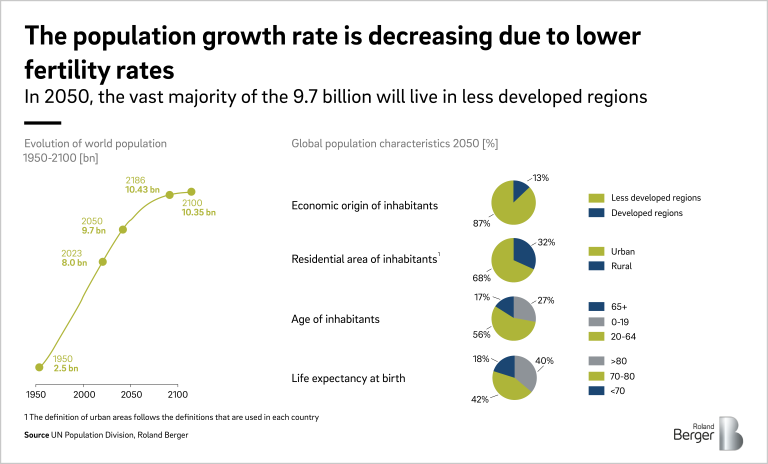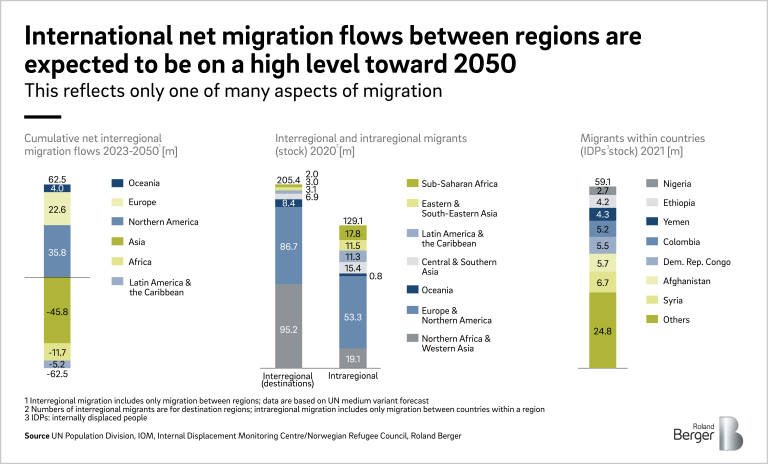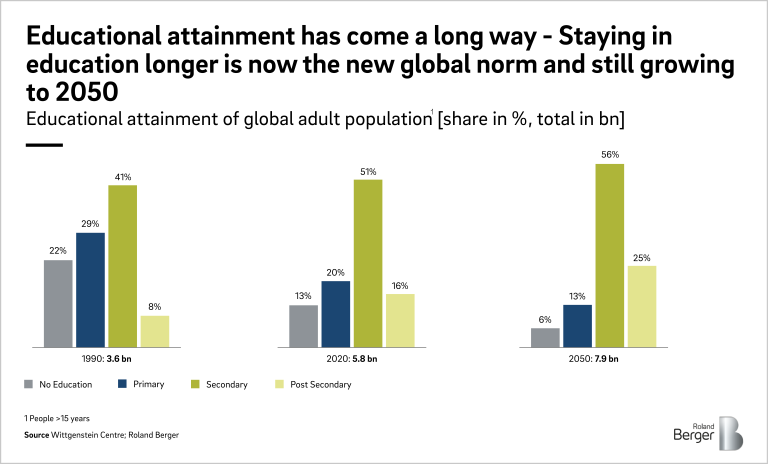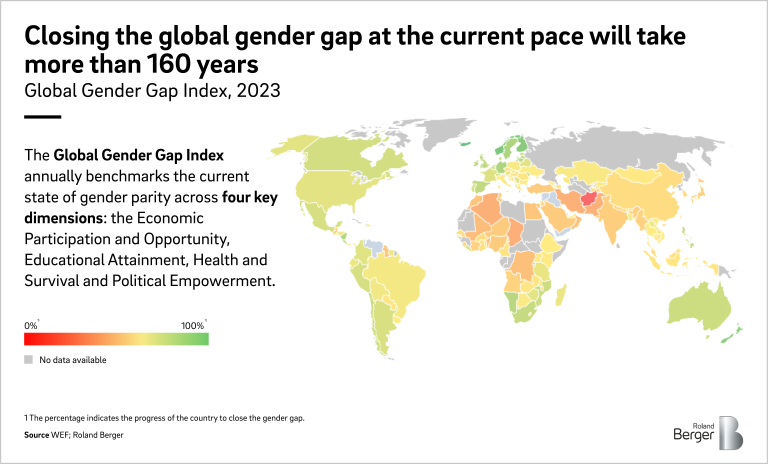One phenomenon observed in both developing and developed nations is the aging of our society. By 2050, half of the global population will be older than 36, compared to just over 31 today. This shift is driven by declining birth rates in developing countries and longer life expectancies. Yet on average, developing countries will remain notably younger – with a median age of under 35 – than developed nations, where the median age will be 46 by 2050.
Another evident trend expected to persist for decades to come is the trend of urbanization. Currently, 56% of the global population is residing in cities, a figure set to climb to 68% by 2050. The most significant increase in the degree of urbanization is projected for Africa, surging from around 44% today to 59% in 2050, and Asia, rising from 51% to 66%. Megacities, such as Delhi, Shanghai, and Mexico City, continue their expansion. By 2035, the world is projected to have 48 megacities with more than 10 million inhabitants. By then, nine of the fifteen biggest urban agglomerations will be in Asia, with Delhi topping the list with more than 43 million inhabitants.
Migration: Driven by choice or necessity, people move across as well as within borders
Currently, over 320 million individuals are residing outside their countries of origin or having abandoned their habitual residences within their own country. Migration is multifaceted, with a significant portion of migrants seeking opportunities for employment and education in foreign locations, particularly the affluent regions of Europe and North America. At the same time, a substantial portion of migrants is compelled to flee persecution, conflict, or natural disasters, with nearly three-quarters of these seeking protection in neighboring countries.
The Northern Africa & West Asia region is a case in point; it currently ranks among the regions with the highest migrant stocks, both in terms of interregional and intraregional migration. Concerning intraregional migration, only Europe & Northern America surpasses the region regarding the stock of international migrants. Looking at interregional migrants, Northern Africa & West Asia stand as the primary destination for migrants. In no small part, this is due to the numerous conflicts, famine, and poverty plaguing the south of Africa and Central Asia, compelling people to leave their home region towards neighboring regions.
Anticipating the future, the global migration pressure is poised to persist and intensify. Cumulatively, it is projected that by 2050, approximately 62.5 million interregional migrants on a net basis will depart from their region of origin. The majority of these emigrants originate from the Asian continent. Furthermore, Africa and Latin America are expected to experience net population outflows. Northern America and Europe continue to stand out as favored destinations, with projections indicating the arrival of approximately 36 million and 23 million net immigrants, respectively, by 2050. Furthermore, experts foresee a huge increase in climate refugees due to the consequences of global warming.
![{[downloads[language].preview]}](https://www.rolandberger.com/publications/publication_image/roland_berger_ins_1177_trend_compendium_people_and_society_cover_download_preview.jpg)












